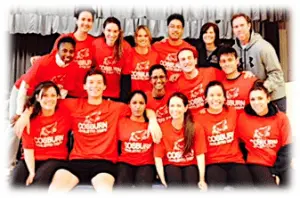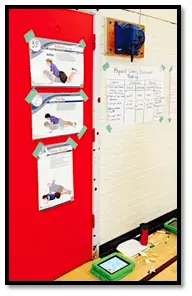In my most recent blog, I wrote about the impact physical literacy is having on physical education teachers and how to develop physical literacy, a major outcome of physical education programs. Mastering physical literacy is a gateway to active participation for life, states Dr. Dean Kriellar, the creator of the Canadian Sport for Life, Physical Literacy Assessment for Youth (PLAY) tools. Dr. Kriellar says, “if we don’t measure it – it isn’t important. This will place physical literacy on an equal footing with literacy and numeracy.”
Today’s physical education classes are all about:
- creating equitable inclusive learning spaces that help develop healthy active individuals who will thrive in an ever-changing world
- helping students acquire physical literacy and health literacy skills, in order to make good decisions about their own health with respect to physical activity, healthy eating, relationships, substances, addictive-related behaviors and their own personal safety
- helping students develop living skills that include; personal skills (self awareness and self monitoring), interpersonal skills (communication skills, social skills) and critical creative thinking skills (planning, processing, drawing conclusions, reflecting)
So how is physical literacy measured? This sounds like a job for a super hero or a group of super heros!
The Action Plan:
I wanted to create an authentic learning experience for the Intermediate Physical Education student teachers at OISE (Ontario Institute for Studies in Education) in Toronto, with an opportunity to work with “real” students to develop their practice and understanding of how to assess physical literacy. After speaking with a PE specialist at a local middle school (grades 6-8), he and I decided on a action plan to help middle school students develop competent movement patterns, self monitor their own personal fitness and to participate safely while encouraging their peers. The end goal in mind, to increase their physical literacy!
The How:
The student teachers helped deliver a 40-minute grade eight class during a one weeklong fitness unit. The PE specialist noted that he wanted to focus this lesson on helping all students improve their competency of a squat and push-up. The learning goals were identified:
Students will:
- Participate in physical activities according to their own readiness
- Identify strengths and areas of improvement related to their personal fitness
- Participate safely while supporting and encouraging their peers.
Using the Canadian Sport for Life Physical Literacy Assessment of Youth (PLAY) rubric, the student teachers created success criteria for a push-up and squat within the framework of the rubric: developing (initial to emerging) and acquired (competent to proficient) skill. The proficient level being an expert execution of the task assessed.
PHYSICAL LITERACY ASSESSMENT TOOL: PUSH-UP
|
Developing |
Acquired |
||
|
Initial |
Emerging |
Competent |
Proficient |
|
|
|||
The Thompson Educational Functional Physical Literacy and Functional Fitness Series charts were used as visuals/anchors for demonstration and to differentiate the activities showing modified versions of the push-up (modified push-up, push-up and t-balance push-up) and squat (squat and hand push squat). Check out the research behind these charts.
The student teachers then asked the students to “choose their challenge” by demonstrating the 3 tiered push-up exercises (modified push-up, push-up, and t-balance push-up) and shared the identified “look fors” for developing and acquired movement competence of a push-up on chart paper posted on the wall.
Before “choosing their challenge” (appropriate tiered push-ups they can perform with competence) the students were asked to put their name on a stickie (e.g., John – push-up) and self assess their competence with respect to the push-up. Do they feel they are in the developing stages or acquired stages of movement competence for a push-up?
In pairs, the students then tried to perform their chosen push-up trying to complete 5-10 repetitions. The students used iPads to videotape each other performing the push-up for self and peer assessment following the task. The student teachers facilitated self and peer assessment of students’ chosen push-up, helping students identify their strengths and areas to improve.
The same was repeated for the squat.
After completing both push-ups and squats, students reflected on their own performance using the following questions:
- How did the movement feel? Were they able to complete 5 -10 repetitions with little effort or feeling fatigue?
- How did the movement look on the video in comparison to the “look fors” for each stage of competency?
- Where did they feel they fell on the developing and acquired movement competence chart?
- Were they correct with their self-assessment before the activity? If yes, why? It not, what did they have to improve upon?
Things to Ponder…
The teaching and learning experience was a positive and engaging for both students and student teachers. It was student centred with an emphasis on the learning process that included critical thinking, self-awareness and discussion about healthy lifestyles. Engaging students in critical thinking allows them to assess their personal level of fitness, interpret the results and use the information to develop personal fitness goals. Measuring physical literacy helps students to identify their areas of competence and areas of movement that need improvement. Teachers need to be sensitive to the environment created when assessing physical literacy and provide one that promotes success for all students. I invite you to share your ideas about assessing physical literacy.
For more information about key messaging for assessing physical literacy visit:
- The Ontario Association for the Support of Physical and Health Educators: Fitness Key Messages
- Canadian Sport for Life









One Response
I really like the idea of video taping themselves doing the skill so they can watch it after and assess their form and figure out where they can improve.